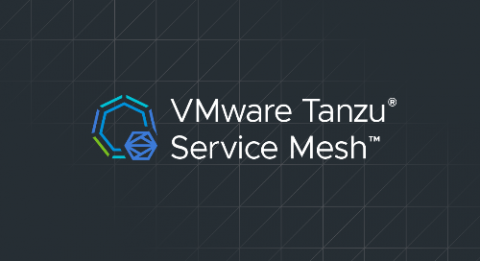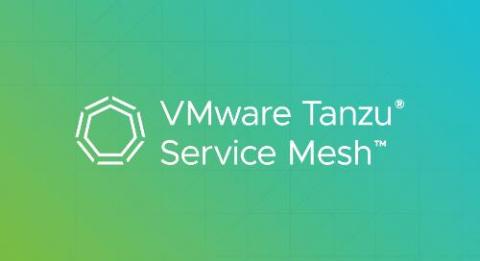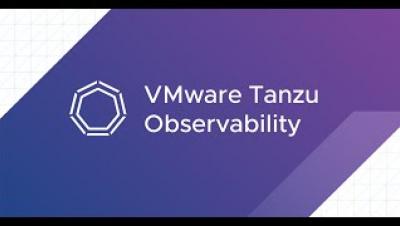Operations | Monitoring | ITSM | DevOps | Cloud
April 2022
VMware Tanzu Application Service Delivers Separate Log Cache
VMware Tanzu Application Service 2.13 unveils an improved Log Cache, which has been separated into its own virtual machine instance for enhanced scaling options. Historically, Log Cache has been colocated on Doppler virtual machine (VM) instances in order to reduce the footprint of foundations. This separation is critical as Log Cache is no longer subject to the formerly imposed Doppler maximum of 40 VM instances and can continue to scale up based on platform and application requirements.
Kubernetes Is Here to Stay: This Is Why
Back for a fourth year, our annual State of Kubernetes survey shows ongoing momentum with Kubernetes adoption. Respondents expressed an easing of most challenges, aside from security. Here are four highlights from this year's survey.
Announcing Stronger Istio Support with Istio Mode for VMware Tanzu Service Mesh
Today, Google submitted Istio to be considered as an incubating project with the Cloud Native Computing Foundation (CNCF), starting the process of handing off management of the project to the CNCF. In tandem with this announcement, we are introducing Istio Mode for VMware Tanzu Service Mesh, reinforcing our support and commitment to open source Istio.
The Five Rs of Application Modernization
Most organizations realize that application modernization is essential in order to thrive in the digital age, but the process of modernizing can be highly complex and difficult to execute. Factors such as rapidly growing application volume, diversity of app styles and architectures, and siloed infrastructure can all contribute to the challenging nature of modernization. To add to this complexity, there are multiple ways to go about modernizing each individual application.
Using Global Namespaces and Zero-Trust Policies with VMware Tanzu Service Mesh
VMware Tanzu Service Mesh delivers a federated Istio service that brings significant value for enterprise customers beyond the core open source project, improving application security, resiliency, and multi-cloud operations.
Application Service Adapter for VMware Tanzu Application Platform: New Beta Release Now Available
A new beta release of the Application Service Adapter is now available for download. This release has many new exciting features that continue to expand the functionality of the Application Service Adapter in conjunction with the release of VMware Tanzu Application Platform version 1.1.
DevOps vs. DevSecOps: What Are the Differences?
I've never really been sure how DevSecOps differs from plain-old DevOps, but over the past year I think there's finally something enough there to have a notion. To be concise, DevOps-think makes software delivery better by moving operations concerns closer to development with the help of a lot of automation and process change.
Announcing New Capabilities in Tanzu Application Platform to Enhance User Experience Across Multiple Clusters and Cloud
Earlier this year we launched VMware Tanzu Application Platform to help customers quickly build and deploy software on any public cloud or on-premises Kubernetes cluster. Tanzu Application Platform provides a rich set of developer tooling along with a pre-paved path to production-enabling enterprises to develop revenue-generating applications faster by reducing developer tooling complexity.
What's New in VMware Tanzu Application Platform 1.1: Image-Based Supply Chains
What's New in VMware Tanzu Application Platform 1.1: Multi-Cluster
Distributed Observability: A Look into ESG Research
Get Started Using VMware Tanzu Mission Control with Tanzu Kubernetes Grid
Today, there are growing pressures on operations and development teams to deploy software faster and into more environments, such as development, staging, or production. Organizations need self-service tools and operational efficiency, and VMware is meeting the challenge with solutions to help modernize operations and unburden their teams. VMware Tanzu Mission Control unifies cluster management to a single control plane and groups resources as a resource hierarchy.
Enlightning: What Is Knative Eventing?
Deploy Tanzu Kubernetes Clusters with Additional Data Volumes Using Tanzu Mission Control
A common problem faced by platform operators is data management; specifically, the detrimental side effects that can manifest due to running out of disk space. For example, if debug logging is left enabled on an app and /var/logs fill the disk, containerd/etcd would now be unable to write their states to disk, causing the cluster to fail. VMware Tanzu Mission Control makes it easy to avoid disk consumption issues by exposing the option to add data partitions to a cluster or nodepool.
















